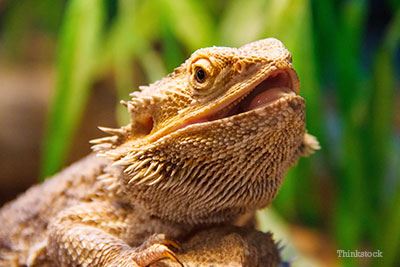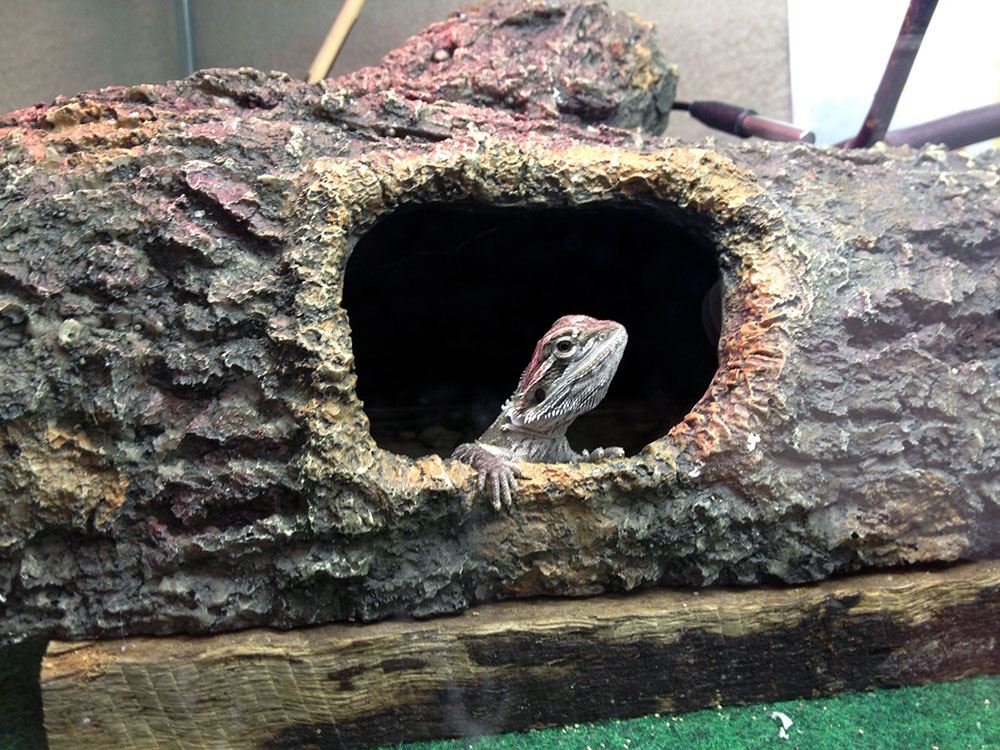- Home
- Pet Owners
- Advice for Reptile Lovers
- Reptile Training
Reptile Training
 HANDLINGSome reptiles cope better than others with being handled. It is a good idea to handle your reptiles regularly and in a low-stress manner to get them used to it. You may even start to notice when your reptile wants to be let out and explore! In saying this, some individuals get stressed when handled, no matter how gentle you are – you may see signs of aggression and other behaviours that indicate your pet is stressed. When handling any animal, one must do so in a non-threatening and gentle way. If a reptile is roughly handled, it will associate its handler with negative experiences, resulting in constant stress and decline in health and welfare. Like dogs, reptiles do not like being approached over or towards their head. It is better to reach for the top end/middle of their bodies, e.g. the largest section of a snake, the thoracic region of lizards, or around the shell of chelonians. It is always important to support this area when holding the animal to prevent discomfort. It can be stressful for the animal if you hesitate when making your approach or conversely go ‘at them’ too quickly (which may appear threatening). One should reach in and pick up the reptile in one smooth motion. Once holding the animal, you should be aware of where it wants to put its limbs, e.g. lizards will want their feet supported as they may naturally grip on tree branches. Snakes will often hook the end of their tail around the handler’s finger or part of clothing. Turtles may feel uncomfortable being lifted and will make swimming motions; they may prefer to be on the ground or in a body of water if you need to take them out of their enclosure. Some behavioural signs of stress while being handled include aggression (hissing, puffing up, biting) and cloacal evacuation (defecation). Reptiles that are comfortable with their owners will often display exploratory behaviour, e.g. tongue flicks while moving calmly around/on the owner. BEHAVIOURAL SIGNS OF STRESSApart from the above, the following are potential signs of stress in you reptile:
BEHAVIOURAL SIGNS OF A HAPPY REPTILEBehavioural signs of positive affective state in these animals have not been well-studied, however we learn more about how reptiles express how they feel all the time. Some potential signs of a healthy and happy reptile include:
For more information on behavioural signs of stress and positive affective state, see ‘A Review of Welfare Assessment Methods in Reptiles, and Preliminary Application of the Welfare Quality® Protocol to the Pygmy Blue-Tongue Skink, Tiliqua adelaidensis, Using Animal-Based Measures’, written by Benn, A.; McLelland, D.; Whittaker, A. ENRICHMENT & TRAININGReptiles have historically been viewed as behaviourally & emotionally simple, brought about by the mislabel of being unintelligent and ‘cold-blooded’. It is now recognised by owners and studied by professionals, that they show a diverse range of behaviours when provided with an appropriate setting. By changing the environment or how food is presented, we can enrich the animal by promoting species-appropriate behaviour, providing behavioural opportunities and giving the animal control over its environment. Once again, this comes down to the knowledge of the natural history of the species in question. For example, providing a range of vertical sticks for a terrestrial reptile would not be beneficial; however, this would be enriching to an arboreal species. Owners may choose to hide food, leave scent trails or place food in different locations around the enclosure so the reptile can exhibit foraging or hunting behaviour. Changing objects in the enclosure, moving them or increasing its complexity can also provide opportunities for a reptile to explore. Training is very useful in reptiles, particularly for large animals like crocodilians, or dangerous species like venomous snakes. When done appropriately, training will reduce the stress experienced by the animal (e.g. when being restrained for an injection), make it safer for its human handlers, and can become another form of enrichment which will strengthen the bond between human and reptile. Positive reinforcement training reptiles follows the same principles as with any other animal. The trainer must provide a reward that is valued by the animal; which may be a small portion of food or even a scratch on the dewlap! The reward must be easy to give, easily taken, and provided as soon as the reptile performs the desired task, e.g. to climb inside a carrier to go to the vet. This way the reptile will associate the task with a positive event. For more information on enrichment and training, see textbook ‘Mader’s Reptile and Amphibian Medicine and Surgery, Chapter 14’ (by Divers, S.; Stahl, S.). With thanks to Amelia Benn, Doctor of Veterinary Medicine Student (expected completion date 2020) University of Adelaide, for sharing this information.
|

